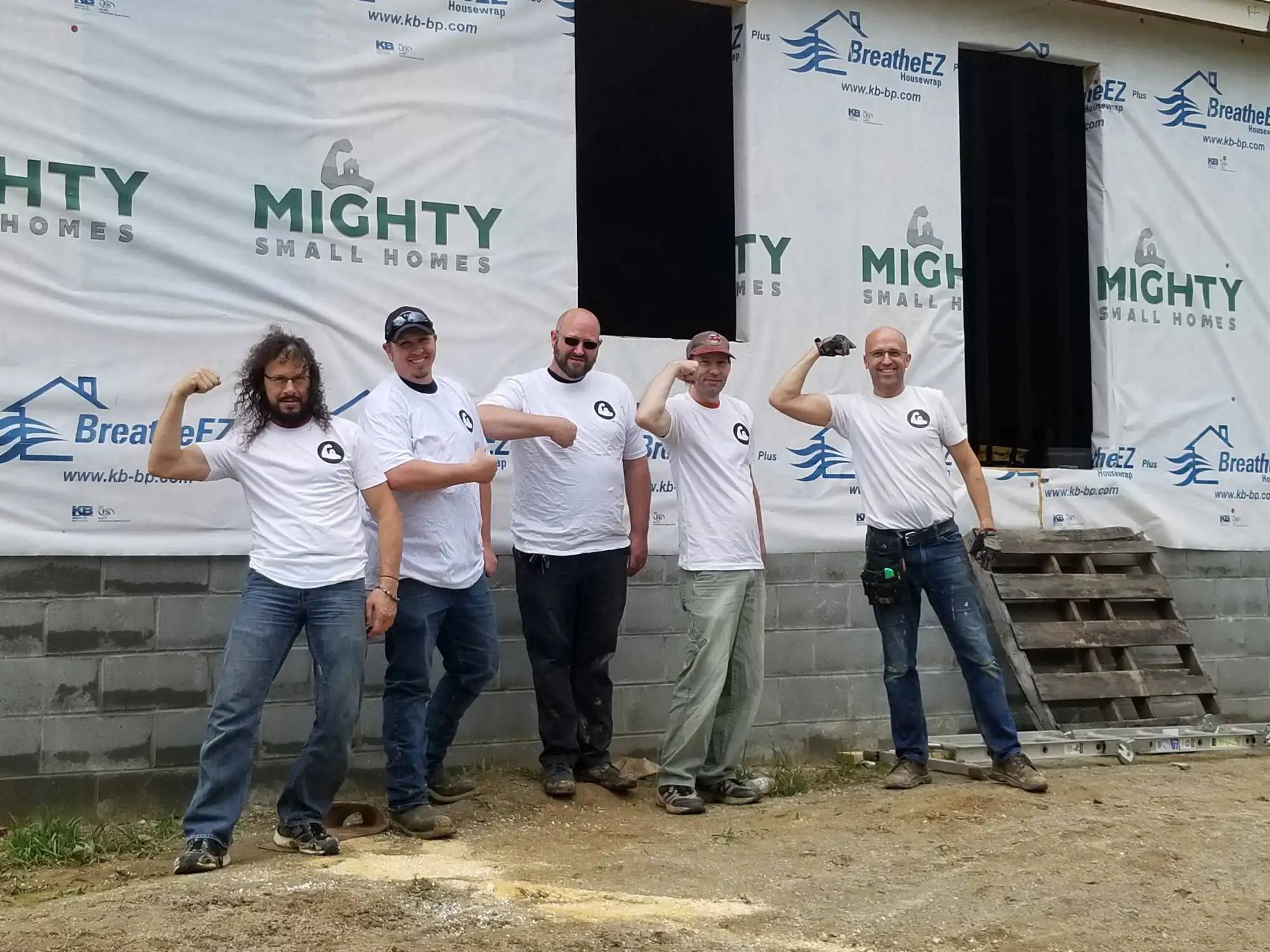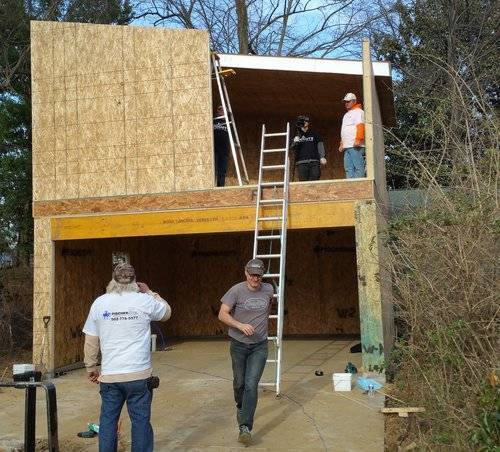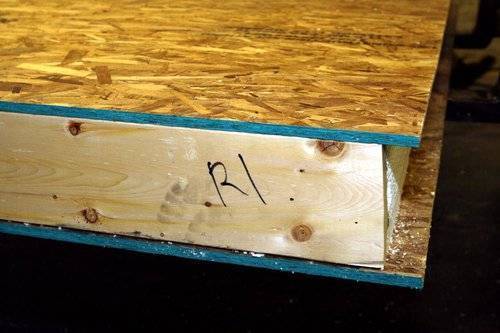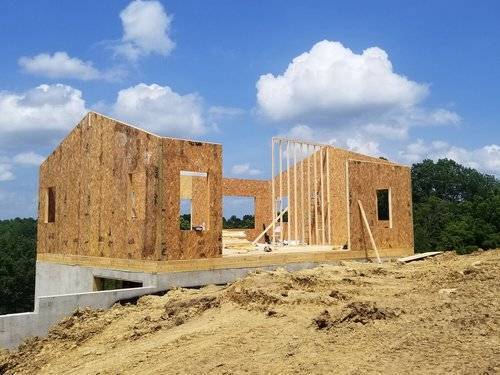Structural Insulated Panels Lower Costs by Requiring Less Skilled Labor


Despite an improving economy, the housing industry continues to suffer from a skilled labor shortage that is driving up home construction costs as much as 83%. Meanwhile, homes built with Structural Insulated Panels (SIPs) that require less skilled labor are lowering costs for both builders and homeowners.
According to a 2018 report from the National Association of Home Builders, 84% of builders reported seeing a shortage of skilled labor availability. This shortage of skilled labor has grown every year since 2012, leading to higher costs across the housing industry, and higher home costs overall. In the last five years, median home prices have risen 30%. External Link. Opens in new window..
 The cost of constructing traditional stick-built homes is significantly affected by skilled labor availability because they must be assembled entirely on-site. Walls, roofs, and floor trusses must be framed on the home’s permanent foundation. This process is often expensive and extremely labor-intensive.
Modular homes are a popular alternative to stick-built homes, but they also remain costly, even though they are pre-built almost entirely off-site. The walls, floors, and roofs of modular homes are pre-joined together, with plumbing and fixtures already installed.
While this reduces the skilled labor cost of building modular homes, it's transporting preassembled sections of your home to the foundation site that leads to extremely high shipping costs for builders.
The cost of constructing traditional stick-built homes is significantly affected by skilled labor availability because they must be assembled entirely on-site. Walls, roofs, and floor trusses must be framed on the home’s permanent foundation. This process is often expensive and extremely labor-intensive.
Modular homes are a popular alternative to stick-built homes, but they also remain costly, even though they are pre-built almost entirely off-site. The walls, floors, and roofs of modular homes are pre-joined together, with plumbing and fixtures already installed.
While this reduces the skilled labor cost of building modular homes, it's transporting preassembled sections of your home to the foundation site that leads to extremely high shipping costs for builders.
 The building process for prefab homes with SIPs moves faster because early construction phases happen in a factory, and on-site assembly requires less skilled labor. Many small home builders build their house kits themselves. This helps building companies become far more efficient, ultimately enabling them to pass lowered costs to homebuyers.
Read More: SIPs Make Homes More Energy Efficient and Sustainable
A traditional stick-built house will be built one stud at a time, piece by piece and requiring skilled carpentry labor. After framing the house with studs, insulation and sheathing must be added. Not only are these steps labor-intensive, but they also have to be performed in sequence.
Panelized small house kits combine all of these steps into one, including the framing, insulation, and sheathing. Additionally, SIPs panels require fewer total pieces to assemble, despite the fact they can run as large as 8 ft x 24 ft. Essentially, one SIP panel takes the place of 18 studs, insulation, and sheathing.
The difference between a panelized product and stick-built product are stark. SIPs offer six benefits over stick-built construction.
The building process for prefab homes with SIPs moves faster because early construction phases happen in a factory, and on-site assembly requires less skilled labor. Many small home builders build their house kits themselves. This helps building companies become far more efficient, ultimately enabling them to pass lowered costs to homebuyers.
Read More: SIPs Make Homes More Energy Efficient and Sustainable
A traditional stick-built house will be built one stud at a time, piece by piece and requiring skilled carpentry labor. After framing the house with studs, insulation and sheathing must be added. Not only are these steps labor-intensive, but they also have to be performed in sequence.
Panelized small house kits combine all of these steps into one, including the framing, insulation, and sheathing. Additionally, SIPs panels require fewer total pieces to assemble, despite the fact they can run as large as 8 ft x 24 ft. Essentially, one SIP panel takes the place of 18 studs, insulation, and sheathing.
The difference between a panelized product and stick-built product are stark. SIPs offer six benefits over stick-built construction.

Skilled Labor Drives The Higher Costs of Stick-built and Modular Homes
 The cost of constructing traditional stick-built homes is significantly affected by skilled labor availability because they must be assembled entirely on-site. Walls, roofs, and floor trusses must be framed on the home’s permanent foundation. This process is often expensive and extremely labor-intensive.
Modular homes are a popular alternative to stick-built homes, but they also remain costly, even though they are pre-built almost entirely off-site. The walls, floors, and roofs of modular homes are pre-joined together, with plumbing and fixtures already installed.
While this reduces the skilled labor cost of building modular homes, it's transporting preassembled sections of your home to the foundation site that leads to extremely high shipping costs for builders.
The cost of constructing traditional stick-built homes is significantly affected by skilled labor availability because they must be assembled entirely on-site. Walls, roofs, and floor trusses must be framed on the home’s permanent foundation. This process is often expensive and extremely labor-intensive.
Modular homes are a popular alternative to stick-built homes, but they also remain costly, even though they are pre-built almost entirely off-site. The walls, floors, and roofs of modular homes are pre-joined together, with plumbing and fixtures already installed.
While this reduces the skilled labor cost of building modular homes, it's transporting preassembled sections of your home to the foundation site that leads to extremely high shipping costs for builders.
How Structural Insulated Panels (SIPs) Lower Costs
Prefab panelized homes built with SIPs are one of the fastest-growing segments in the construction industry today and the most popular choice for panelized building. Although there are many good reasons to build homes with SIPS, the faster build time is one of the most frequently cited reasons. The building process for prefab homes with SIPs moves faster because early construction phases happen in a factory, and on-site assembly requires less skilled labor. Many small home builders build their house kits themselves. This helps building companies become far more efficient, ultimately enabling them to pass lowered costs to homebuyers.
Read More: SIPs Make Homes More Energy Efficient and Sustainable
A traditional stick-built house will be built one stud at a time, piece by piece and requiring skilled carpentry labor. After framing the house with studs, insulation and sheathing must be added. Not only are these steps labor-intensive, but they also have to be performed in sequence.
Panelized small house kits combine all of these steps into one, including the framing, insulation, and sheathing. Additionally, SIPs panels require fewer total pieces to assemble, despite the fact they can run as large as 8 ft x 24 ft. Essentially, one SIP panel takes the place of 18 studs, insulation, and sheathing.
The difference between a panelized product and stick-built product are stark. SIPs offer six benefits over stick-built construction.
The building process for prefab homes with SIPs moves faster because early construction phases happen in a factory, and on-site assembly requires less skilled labor. Many small home builders build their house kits themselves. This helps building companies become far more efficient, ultimately enabling them to pass lowered costs to homebuyers.
Read More: SIPs Make Homes More Energy Efficient and Sustainable
A traditional stick-built house will be built one stud at a time, piece by piece and requiring skilled carpentry labor. After framing the house with studs, insulation and sheathing must be added. Not only are these steps labor-intensive, but they also have to be performed in sequence.
Panelized small house kits combine all of these steps into one, including the framing, insulation, and sheathing. Additionally, SIPs panels require fewer total pieces to assemble, despite the fact they can run as large as 8 ft x 24 ft. Essentially, one SIP panel takes the place of 18 studs, insulation, and sheathing.
The difference between a panelized product and stick-built product are stark. SIPs offer six benefits over stick-built construction.

6 Benefits of Building a Home with SIPs
- Faster construction
- Less skilled labor required
- High energy efficiency
- Produces less construction waste
- Superior strength
- Greater long-term value
Comparing Stick-Built, Panelized, and Modular Homes
Essential Checklist: What to Look for When Buying and Building a House Kit
Free Download
Below, we have compiled a table of commonly debated qualities and differences between stick-built homes, panelized homes, and modular homes.
The benefits of panelized small-home kits are undeniable. The time, labor, and money savings, energy efficiency alone makes these hybrid homes a strong option. As the availability in the U.S. labor market remains low, homes built with SIPs will continue to grow in popularity.
Interested in using a panelized product? Reach out today to see how Mighty Small Homes can improve your home building experience.